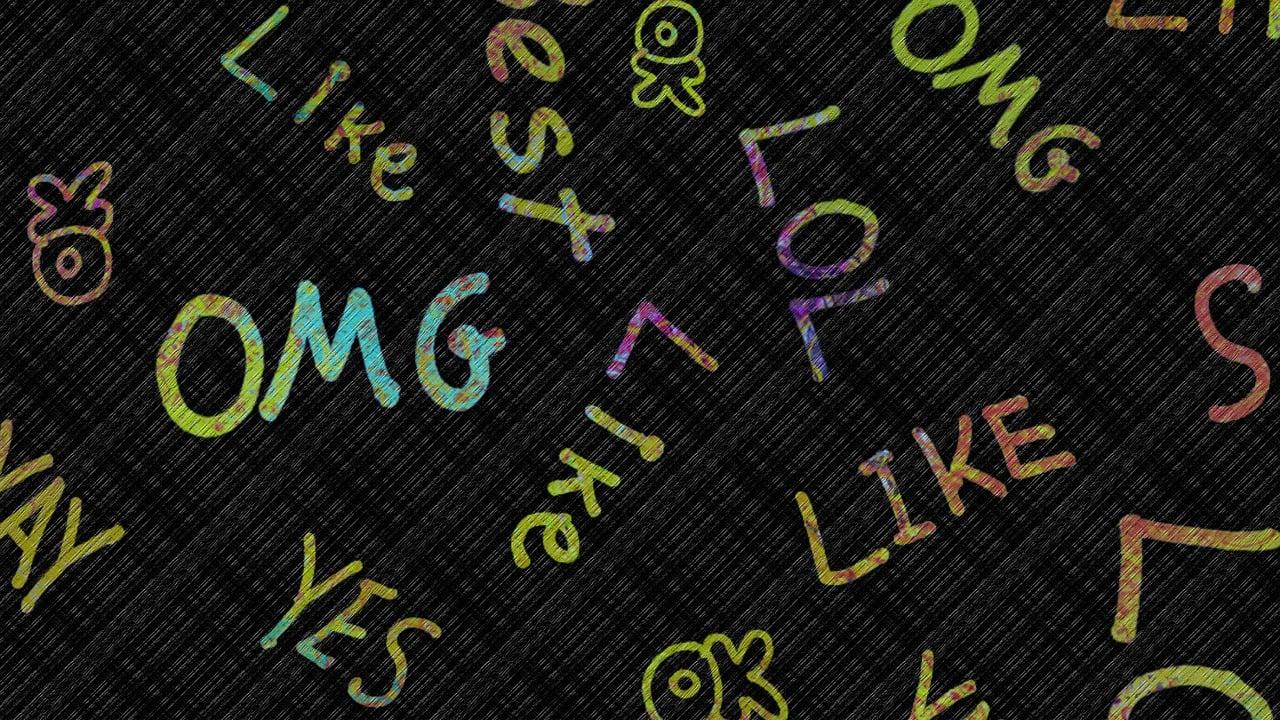Some confusing aspects of the English language have been around for decades, while others are new issues brought about by technological advancements. Some traditionalists, or those who grew up in a world before smartphones and computers in every home, may look at modern messages like they are hieroglyphs.
In this guide, we’re exploring a couple of issues that plague people today. One is the difference between “to” and “too”, words that sound the same in most scenarios but don’t have the same meaning at all. People often get confused. On top of this, we’re looking at text slang, and the words and abbreviations that people use in text or written messages to keep things short and fast.

Proper Usage of To and Too
The confusion between "to" and "too" is a common English language hurdle, often leading to grammatical errors. English learners can find this hard, and even those who have spoken English all their lives sometimes get it wrong.
These two homophones, though pronounced the same way, serve distinct grammatical purposes in the English language. Understanding the differences and knowing when to use each can significantly enhance one's writing skills.
To
The word "to" is a versatile preposition with various applications. Its primary functions include indicating direction, expressing a limit, or signalling a recipient.
Direction: When "to" is used to indicate direction, it implies movement or a destination. For example, "I am going to the store" suggests a journey or action toward a specific location.
“She walked to the shops”
Infinitive Verb Marker: "To" is also used as an infinitive marker before verbs. In this context, it introduces the base form of the verb.
“I want to read a book.”
Recipient or Possession: "To" is employed to signify a recipient or possession, often in the context of giving or transferring something.
“The shirt belongs to David.”
Too
On the other hand, "too" serves as an adverb and is used to convey excess or addition. It denotes an extent or degree, emphasising an abundance or an additional element.
Excess or Addition: When "too" is used, it indicates an excessive amount or an additional factor beyond what is necessary or expected.
“The coffee is too hot to drink right now.”
Also or Likewise: In some cases, "too" can function as an alternative to "also" or "likewise," indicating agreement or similarity.
“She likes to bake, and I do too.”
Using To and Too in Sentences
This is something that can be really confusing, as you may have to use multiple instances of the words in one sentence.
“I didn’t want to go to the shops, but Sophie was going so I decided I would, too.”
There’s a lot to unpack there. The first example is using to as an infinite marker before “go”. The second use is to indicate a destination, going “to” the shops. The final use of one of these two words is using “too” which is a substitute for “also”.
In order to avoid errors:
- 1. Understand the Context. Pay attention to the context of the sentence. If you are expressing direction or introducing a verb, "to" is likely the correct choice. If you intend to convey excess or agreement, opt for "too."
- 2. Infinitive Verbs. When you're using a verb, check if it's part of an infinitive. If it is, use "to." For instance, "I want to dance" requires "to" before the verb "dance."
- 3. Excess or Addition. When you want to convey an excessive amount or add emphasis, choose "too." For example, "The package was too heavy for one person to carry."
- 4. Read Aloud. Reading the sentence aloud can often help identify the correct usage. If the sentence sounds better with emphasis on excess or agreement, "too" is likely the correct choice.
- 5. Proofread your sentences. Always proofread your writing, specifically checking for instances of "to" and "too." Take the time to analyse the sentence structure and ensure the intended meaning is accurately conveyed. If you want to write a letter, for instance, getting it right can make all the difference.
Decoding Text Slang

Back in the early days of SMS there was a real need for messages to be abbreviated. Not only did it take a really long time to write out a message, but it was also possible that your provider would charge you based on the number of characters in your text. People started to use some of the more simple abbreviations.
We quickly saw things like LOL and G2G cropping up in internet slang. People were looking for more convenience as well as much shorter messages.
There are some cautionary tales related to abbreviations and making sure you understand them. Many of us have an amusing (but often cringeworthy) tale of people who got things wrong. One story I heard from a friend was of somebody who lost their job, and texted their mum to share the sad news. They simply replied “LOL”. Of course, mum had confused her abbreviations and thought that LOL meant “lots of love”. An innocent mistake, but mum briefly looked incredibly insensitive!
So now we understand that message slang, also known as text speak or SMS language, involves abbreviations, acronyms, and shortcuts to convey messages more quickly, let’s explore some common examples to help you to decode the messages you’re receiving.
LOL (Laugh Out Loud)
- Meaning: Used to indicate that something is funny.
- Example: "Your joke was hilarious, LOL!"
BRB (Be Right Back):
- Meaning: Indicates a temporary absence, with the intention to return shortly.
- Example: "Gotta grab some coffee, BRB!"
TTYL (Talk To You Later):
- Meaning: Indicates that the conversation will continue at a later time.
- Example: "I have a meeting now, TTYL!"
OMG (Oh My God/Gosh):
- Meaning: Expresses surprise or disbelief.
- Example: "OMG, I can't believe you did that!"
ICYMI (In Case You Missed It):
- Meaning: Used when sharing information that the recipient may not be aware of.
- Example: "ICYMI, the team won the game yesterday."
BTW (By The Way):
- Meaning: Introduces additional information or a side note.
- Example: "BTW, did you see the new movie trailer?"
IDK (I Don't Know):
- Meaning: Indicates uncertainty or lack of knowledge.
- Example: "IDK where the show is tonight, sorry"
IMO/IMHO (In My Opinion/In My Humble Opinion):
- Meaning: Introduces a personal viewpoint.
- Example: "IMO, the best pizza place is downtown."
FYI (For Your Information):
- Meaning: Provides information the recipient may find useful.
- Example: "FYI, the meeting is at 3 PM."
ROFL (Rolling On the Floor Laughing):
- Meaning: Indicates extreme laughter.
- Example: "That joke was so funny, I'm ROFL!"
SMH (Shaking My Head):
- Meaning: Expresses disapproval or disbelief.
- Example: "SMH, I can't believe they cancelled the concert."
TTYT (Talk To You Tomorrow):
- Meaning: Indicates that the conversation will continue the next day.
- Example: "I'm signing off for today, TTYT!"
GR8 (Great):
- Meaning: A shortened form of the word "great."
- Example: "The weather is GR8 today!"
IIRC (If I Remember Correctly)
- Meaning: If I recall, these details are correct.
- Example: “We should consider a different restaurant, Sharon is allergic to seafood, IIRC.”
BFF (Best Friends Forever):
- Meaning: Refers to a very close friend.
- Example: "She's been my BFF since kindergarten."
NSFW (Not Safe For Work):
- Meaning: Indicates content that may be inappropriate in a work setting.
- Example: "I found a hilarious, but NSFW, meme."
YOLO (You Only Live Once):
- Meaning: Emphasises living in the moment or taking risks.
- Example: "Let's go on a spontaneous road trip, YOLO!"
DM (Direct Message):
- Meaning: Indicates a private message sent on social media rather than public messages everyone can see.
- Example: "I'll DM you the details."
ICYMI (In Case You Missed It):
- Meaning: Reiterates that the information is being shared again for those who might have missed it.
- Example: "ICYMI, here's the link to the article."
FOMO (Fear Of Missing Out):
- Meaning: Describes the fear that others are having a good time without you.
- Example: "I can't skip the party; I have FOMO!"
AFK (Away From Keyboard):
- Meaning: Indicates a temporary absence from the computer or online conversation.
- Example: "I'll be AFK for a few minutes, be right back!"
WFH (Working From Home)
- Meaning: Away from the office but still working from home, a term that has become much more popular in recent years.
- Example: “Simon is WFH today.”
IRL (In Real Life)
- Meaning: Something that exists in the real world rather than the virtual world via text messaging!
- Example: “We will meet the team from the other office IRL next month at the convention.”
These are just some examples. There are lots of other abbreviations and American slang creeping into British culture. Some of them might even just be used among your friend group, and you might come up with your own! It can get confusing, but you might well find you get a message that you don’t understand. Fortunately, we live in the age where we can search for these abbreviations.
As always, there are numerous methods that you can use to try and improve your grammar and use of English, and make sure you are making a good impression in written communication.
























